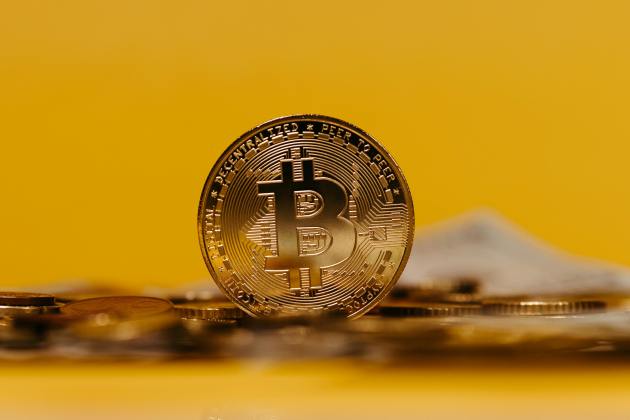What is a peer-to-peer payment protocol, and how does it work?
Peer-to-peer (P2P) payment protocols are sets of rules and standards that enable transactions directly between two parties without intermediaries like banks or payment processors. P2P payment protocols increase security with cryptographic encryptions and provide lower transaction fees, as there are no intermediaries involved.
Blockchain-based P2P protocols are widely used in the crypto ecosystem. Users who wish to utilize P2P payments create a wallet and connect it to their chosen platform through a generally streamlined process. Sending funds is a seamless process: Just enter the amount and the recipient’s wallet address, then press send.
 After the transaction is initiated, validators verify and add the transaction to the block — a decentralized ledger containing all blocks of data, which is where the “blockchain” name comes from. The recipient can freely use or transfer the received funds afterward.
After the transaction is initiated, validators verify and add the transaction to the block — a decentralized ledger containing all blocks of data, which is where the “blockchain” name comes from. The recipient can freely use or transfer the received funds afterward.
Is Bitcoin truly a peer-to-peer protocol?
Satoshi Nakamoto, the pseudonymous creator of Bitcoin (BTC), labeled the original cryptocurrency as “peer-to-peer electronic cash” in its white paper. However, that definition needs a deeper look.
In true P2P payment systems, the sender and the receiver should be able to perform the transaction without any intermediaries. In Bitcoin’s case, blockchain nodes, called “miners,” act as mediators. Users can’t transact without an internet connection, as Bitcoin needs to connect to the miners for mediation to process the transaction. Therefore, it’s more accurate to say that Bitcoin operates on a peer-to-peer network rather than saying it is a peer-to-peer payment protocol itself.
Why did Satoshi Nakamoto describe Bitcoin as “peer-to-peer electronic cash”?
In the context of Bitcoin’s P2P network, “peer-to-peer” refers to the individual nodes connecting directly to each other to share information and validate transactions.
The “electronic” part is because Bitcoin isn’t a physical currency like traditional cash and exists only in the digital space. Nakamoto emphasized Bitcoin’s use as an everyday transaction currency by calling it “cash,” referring to the widely accepted and easily transferable form of money, used by most people worldwide. Nakamoto envisioned Bitcoin as a replacement for traditional fiat currencies.
What about other digital payment systems?
Every digital payment system used today employs intermediaries for transactions. Banks, which mediate bank transfers, are the most common. For credit card systems, credit card issuers are the intermediaries in transactions between the card owner and the merchant through a point-of-sale (POS) device.
Both the credit card and the POS device are linked to the credit card company’s system. So, in the event of a system shutdown, all credit card users will be unable to pay for a haircut or purchase coffee. This is called a single point of failure, where all users rely on a sole system for their daily payment requirements.
What would it take for CBDCs to be considered peer-to-peer?
A central bank digital currency, simply known as CBDC, is a digital form of a country’s fiat currency issued and regulated by the central bank. Crucial to achieving financial inclusion, offline payments play a key role in CBDCs’ case. CBDC holders need to be able to transact with each other even when there is no internet connection. This is especially important for people with lower income levels who may not be able to afford an internet subscription, enabling them to use CBDCs offline.
 The most distinctive aspect of physical cash is its P2P payment functionality, which allows people to exchange value without intermediaries. If digitizing and replacing paper-based cash is the goal, preserving this vital feature while offering offline payments is paramount.
The most distinctive aspect of physical cash is its P2P payment functionality, which allows people to exchange value without intermediaries. If digitizing and replacing paper-based cash is the goal, preserving this vital feature while offering offline payments is paramount.
What is machine-to-machine commerce, and how can it benefit from P2P payments?
In the near future, Internet of Things (IoT) devices such as smart electric cars and smart fridges will pay each other automatically, paving the way for machine-to-machine (M2M) commerce. For example, electric cars will charge themselves at charging stations, and refrigerators will order food and drinks as needed.
CBDCs can be used to facilitate these M2M transactions in a safe environment, as they are already government-issued and regulated. IoT devices can be connected to their owner’s wallets, enabling them to make authorized purchases autonomously.
The M2M commerce market is expected to grow from $37 billion in 2023 to $57 billion by 2032, nearly doubling itself in value — a growth that comes with a significant load in terms of transactions. In the age of M2M commerce, the world will need an infrastructure that can support billions of transactions per second. Having an intermediary only adds more fatigue to the payment network. A true P2P payment system will be essential to meeting the needs of the potential volume of M2M commerce.
Do we even need these peer-to-peer protocols?
Yes. P2P protocols support smart contracts and blockchain, which assist automatization and decentralization. As the transactions are “peer-to-peer,” a P2P protocol would also enhance security and privacy while making it easier for entities to transact across borders and overseas, promoting globalization and adoption. They offer lower transaction costs and process transactions faster by removing third parties. If finance is to be kept on par with the current standard, where everything is slowly being digitized, achieving true peer-to-peer facilitation is pivotal.
Is there a true peer-to-peer payment solution available?
Sovereign Wallet, an identity-based blockchain technology company focused on digital asset management and identity solutions, provides a true peer-to-peer solution with its flagship product, MetaMUI. MetaMUI is a peer-to-peer protocol featuring offline payment, direct cross-border payment and scalability to cover M2M commerce without intermediaries.

MetaMUI facilitates payments without a need for an internet connection. Source: Sovereign Wallet
The integration of MetaMUI could allow CBDCs to transact without internet access. Users of the MetaMUI CBDC could also directly transfer funds to those in other countries using different MetaMUI CBDCs, without any settlement currencies or regulatory barriers getting involved.
In its chain code, MetaMUI leverages edge computing, which refers to data processing and computation closer to the data source, such as IoT devices, instead of centralized servers or the cloud, which decelerates the process. By implementing edge computing, the MetaMUI CBDC can execute smart contracts in a P2P manner directly between devices, enabling it to be used in M2M commerce.
Disclaimer. Cointelegraph does not endorse any content or product on this page. While we aim at providing you with all important information that we could obtain in this sponsored article, readers should do their own research before taking any actions related to the company and carry full responsibility for their decisions, nor can this article be considered as investment advice.










